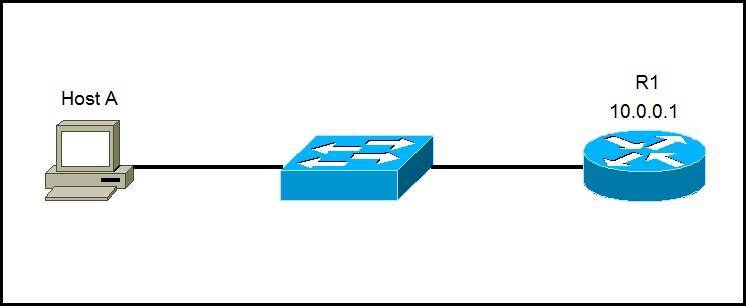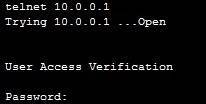Telnet protocol
Telnet is an application protocol that allows a user to communicate with a remote device. A user on a client machine can use a software (known as a Telnet client) to access a command-line interface of another, remote machine that is running a Telnet server program.
Telnet is often used by network administrators to access and manage remote devices. A network administrator can access the device by telnetting to the IP address or hostname of a remote device. The network administrator will then be presented with a virtual terminal that can interact with the remote host.
To use telnet, you must have a software (Telnet client) installed. On a remote device, a Telnet server must be installed and running. Consider the following example:
The network administrator wants to use his computer (Host A) to access and manage the router (R1). The administrator will start a Telnet client program on Host A and enter the IP address of the router R1 (telnet 10.0.0.1):
The administrator can now manage the remote device (R1) from his own computer.
Although Telnet is simple and easy to use, it is not widely used anymore, especially in production environments. This is because Telnet sends all data in clear-text, including usernames and passwords! SSH is commonly used today instead of Telnet. Telnet is only used if SSH is not available on the device, for example on some older Cisco equipment.





